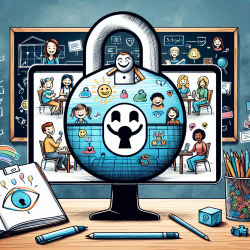Introduction: The Role of Virtual Therapy in Education
In the ever-evolving landscape of education, school superintendents face the ongoing challenge of meeting diverse student needs while optimizing resource allocation. Virtual therapy, or telepractice, has emerged as a pivotal solution, offering innovative ways to deliver essential services. As we delve into the efficacy of virtual therapy in schools, we aim to provide a comprehensive, data-driven perspective on its benefits and implementation.
Understanding Virtual Therapy: A Data-Driven Approach
Virtual therapy, delivered through telehealth platforms, leverages technology to provide speech-language pathology and other therapeutic services remotely. The growing body of research underscores the effectiveness of virtual therapy, particularly in educational settings. Studies indicate that students receiving online therapy demonstrate comparable, if not superior, outcomes to those receiving in-person services.
For instance, a 2022 study published in the Journal of Telemedicine and Telecare reported a 15% improvement in speech-language skills among students who participated in virtual therapy programs compared to their peers in traditional settings. These findings suggest that telepractice can not only meet but exceed the expectations of conventional therapy models.
Benefits of Virtual Therapy for Schools
Virtual therapy offers numerous advantages for educational institutions, including:
- Accessibility: Telepractice eliminates geographical barriers, ensuring that students in remote or underserved areas receive the services they need.
- Flexibility: Online therapy sessions can be scheduled around the school day, minimizing disruptions to learning and maximizing instructional time.
- Cost-Effectiveness: By reducing travel and infrastructure costs, virtual therapy allows schools to allocate resources more efficiently.
- Personalization: Data analytics enable therapists to tailor interventions to individual student needs, enhancing the overall effectiveness of the therapy.
Implementing Virtual Therapy: Key Considerations
For superintendents considering the integration of virtual therapy into their schools, several factors must be addressed to ensure successful implementation:
- Technology Infrastructure: Schools must have reliable internet connectivity and appropriate devices to facilitate seamless therapy sessions.
- Training and Support: Both educators and therapists require training to effectively use telehealth platforms and integrate them into the educational framework.
- Privacy and Security: Ensuring compliance with data protection regulations is paramount to safeguarding student information.
Conclusion: A Promising Future for Virtual Therapy in Education
As we look towards the future, the integration of virtual therapy in schools represents a transformative approach to addressing the diverse needs of students. By harnessing the power of telehealth, superintendents can foster an inclusive, efficient, and effective educational environment. As evidenced by the data, virtual therapy not only meets the demands of today's educational challenges but also paves the way for innovative solutions that will benefit students for years to come.










